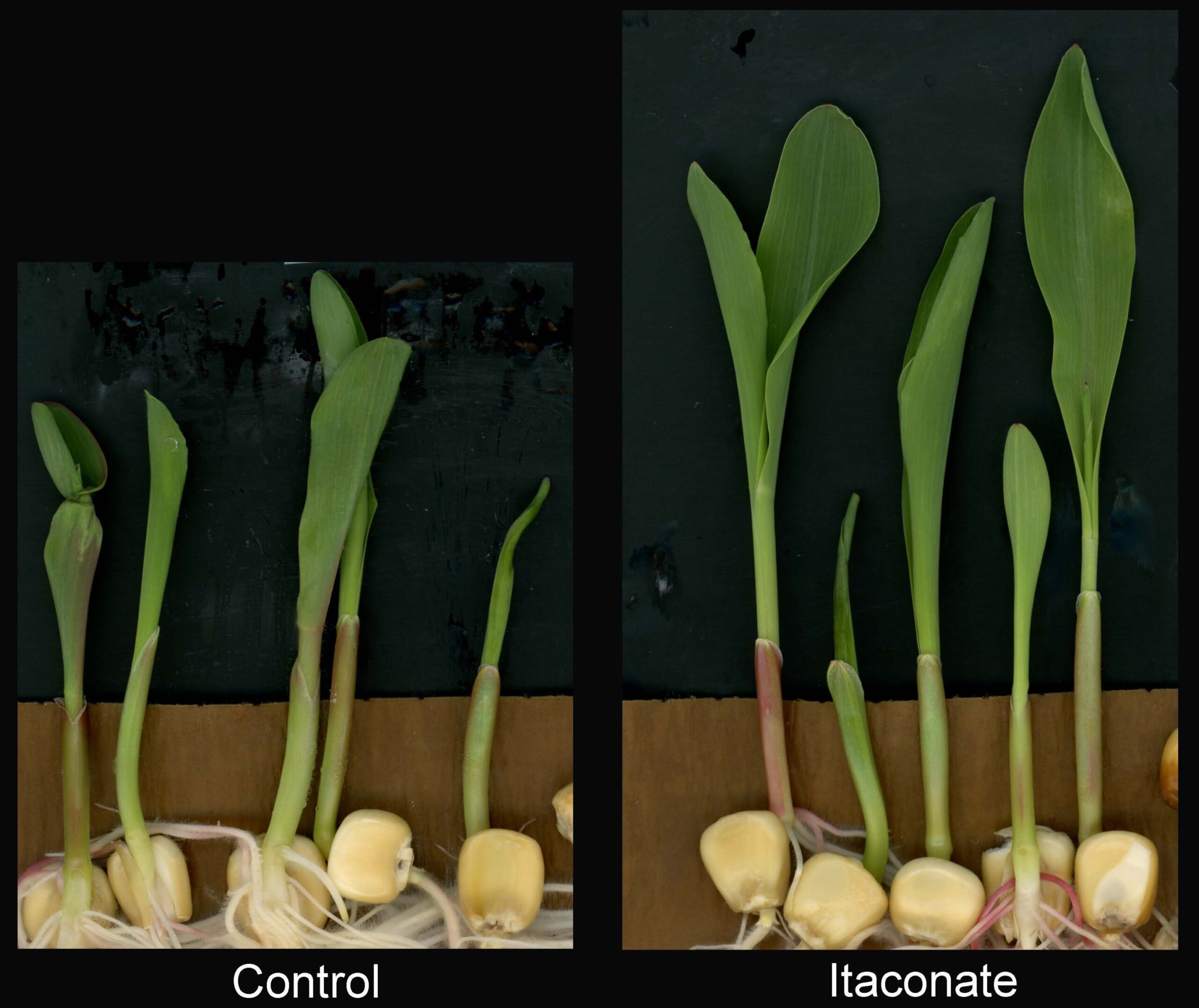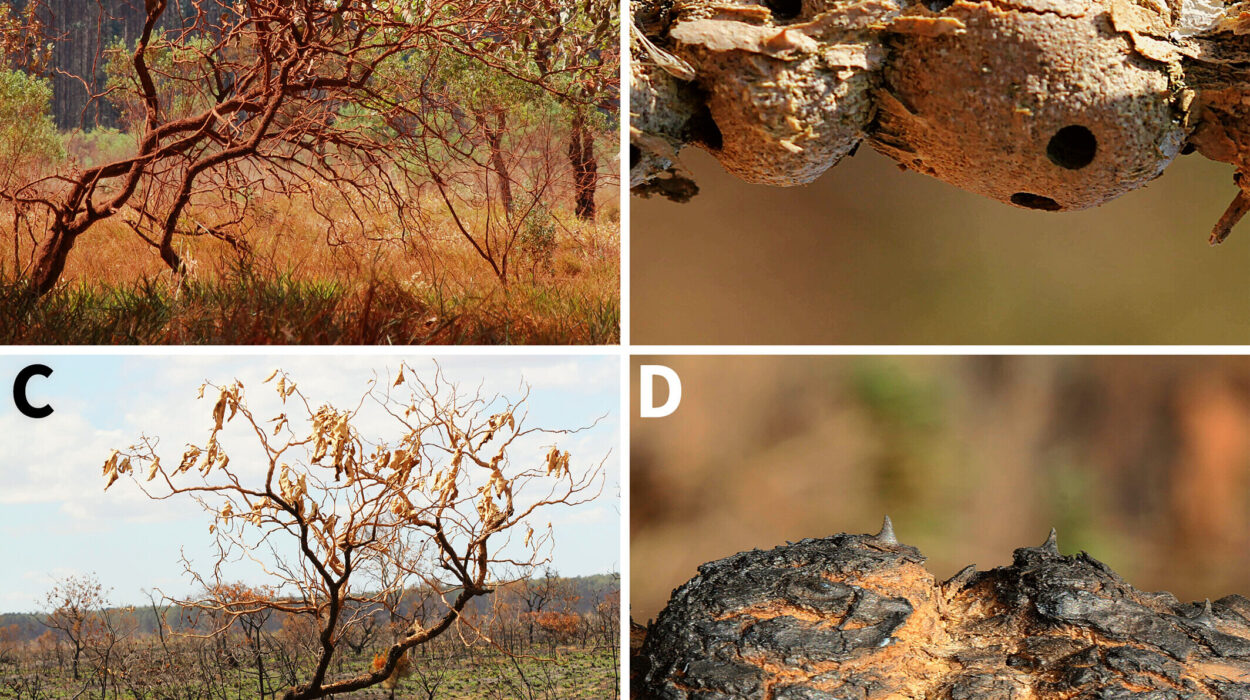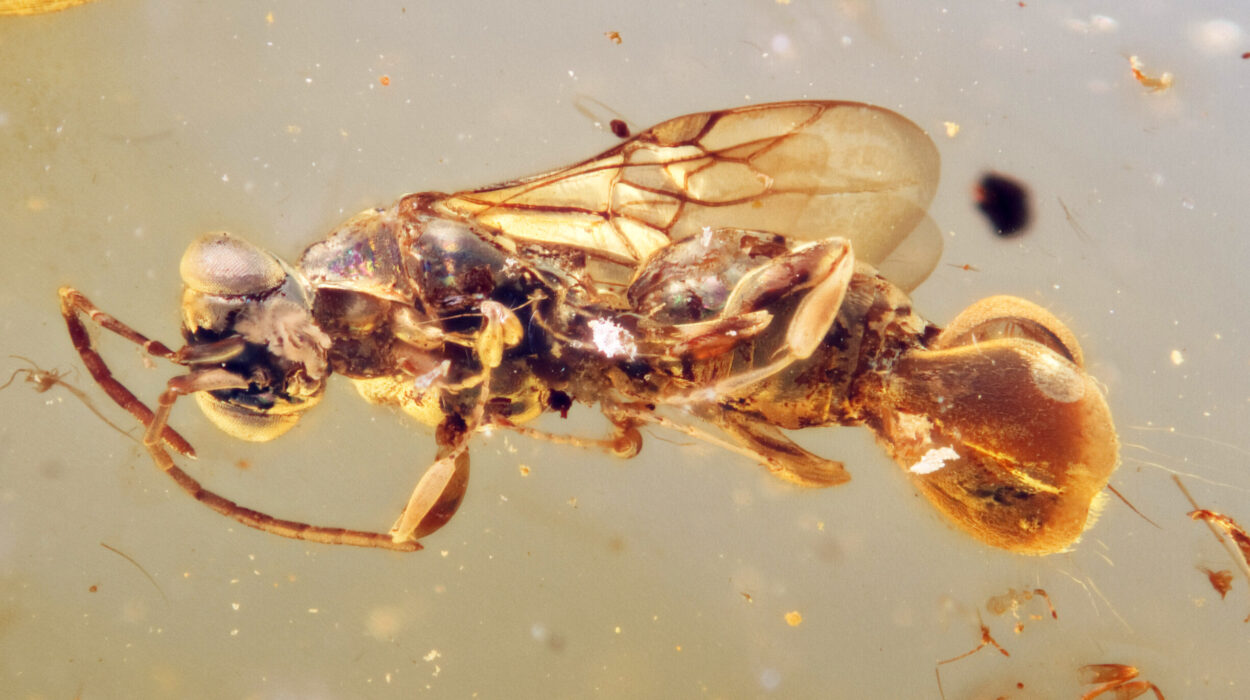In the mysterious, microscopic world of cellular chemistry, some molecules wear more than one hat. Among them is itaconate, a molecule that has long been recognized for its defensive role in animals. This remarkable compound has been associated with immune responses, especially in fighting inflammation and viruses. But now, a team of researchers has uncovered something truly unexpected: itaconate is not only found in animals—it also exists in plants, and it may play a powerful role in helping them grow.
This revelation isn’t just a curious footnote in plant biology. It hints at a fascinating overlap between plant and animal life, suggesting that the very molecular tools used by our bodies to defend against disease might also help crops reach their full potential. Let’s dive into the world of itaconate, a once-overlooked molecule that could hold the key to future agricultural breakthroughs.
Itaconate: A Molecule Born of Energy
To understand the importance of this discovery, it helps to begin with what itaconate actually is. Itaconate is classified as a metabolite, a type of molecule produced during the body’s normal metabolic processes—specifically, during the breakdown of nutrients for energy. In animals, itaconate has gained fame for its role in the immune system, particularly its ability to regulate inflammation and suppress invading pathogens.
In recent years, itaconate has become the focus of intense biomedical research, especially for its potential applications in treating inflammatory diseases. It acts as a kind of molecular peacekeeper: when immune cells are activated by a pathogen or tissue damage, they generate itaconate to dampen excessive inflammation and protect surrounding tissues from collateral damage.
This makes itaconate not just a metabolic byproduct, but a regulatory signal—a molecule with purpose, intent, and intelligence baked into its chemical structure. Scientists had good reason to believe it was an animal-only molecule, a unique creation of vertebrate immune defense systems.
Until now.
The Discovery That Changed the Narrative
In a groundbreaking study published on June 6, 2025, in Science Advances, researchers from the University of California San Diego, in collaboration with Stanford University, Peking University, Carnegie Institute of Science, and Universidad Nacional Autónoma de México, delivered a startling report: plants make itaconate, too.
The team, led by Assistant Professor Jazz Dickinson of UC San Diego’s Department of Cell and Developmental Biology, set out to explore unknown corners of plant development. While studying the biochemical pathways in plants—particularly in maize (corn) and the model plant Arabidopsis thaliana—they applied chemical imaging and mass spectrometry to detect and map molecules at the cellular level.
To their amazement, itaconate was not only present in plants but was being actively synthesized in areas of active cell growth. This was no trace leftover from soil or contamination. Plants were producing itaconate themselves.
A Growth Enhancer in Disguise
Curious about what this animal-associated molecule might be doing in plant tissue, the researchers conducted a simple yet revealing experiment: they watered corn seedlings with itaconate.
The results were immediate and visible. The corn plants that received itaconate treatments grew taller and faster than those that didn’t. Encouraged by this, the team probed deeper, examining how itaconate interacted with plant cells and their internal proteins.
Through close biochemical analyses, they discovered that itaconate is not a passive byproduct in plants either. Much like in animals, it serves multiple functions—acting as both a metabolic signal and a modulator of stress responses. In particular, itaconate was found to interact with plant-specific proteins that are involved in root development, oxygen stress responses, and metabolic balance.
These functions are critical to healthy plant growth, especially in challenging environmental conditions. From the roots to the shoots, itaconate seemed to be quietly orchestrating improvements across the board.
How Itaconate Works in Plants
What makes this discovery so powerful is the way itaconate seems to bridge two distinct realms of life—animal and plant—by playing similar regulatory roles in both. In plants, researchers found that itaconate contributes to primary metabolism, which refers to the essential biochemical processes that keep cells alive and functioning. These include respiration, nutrient absorption, and the conversion of sunlight into chemical energy via photosynthesis.
In addition, itaconate plays a role in managing oxidative stress, a condition in which the balance of free radicals and antioxidants in cells is disrupted. Just as in human tissues, where oxidative stress can cause damage and lead to disease, plant cells also suffer when oxidative damage accumulates. Itaconate’s ability to modulate these stress pathways suggests it could help plants survive and thrive under harsh conditions—such as drought, heat, or nutrient-poor soils.
Perhaps most intriguingly, itaconate may function as a signal molecule, helping different parts of the plant communicate with one another during growth and stress responses. Much like hormones or neurotransmitters in animals, itaconate may act as a messenger molecule that coordinates complex physiological changes.
Agricultural Implications: A Greener Future?
This discovery couldn’t come at a more critical time. As the global population continues to climb, the pressure to produce more food—on less land, with fewer chemical inputs—is intensifying. The modern agricultural system faces immense challenges: climate change, soil degradation, water scarcity, and resistance to synthetic pesticides and fertilizers.
In this context, the ability to harness naturally occurring plant metabolites like itaconate represents a revolutionary opportunity.
Because itaconate is naturally produced in both animals and plants, using it to enhance crop growth avoids many of the ecological and health concerns associated with synthetic growth chemicals. Imagine a world where crops could be “coached” into growing stronger, faster, and more resilient—simply by stimulating a molecule they already know how to make.
The researchers caution that more work needs to be done to understand the long-term effects and mechanisms of itaconate application in agriculture. But the early signs are more than promising. The concept of using nature’s own molecules to supercharge food production is an elegant solution rooted in biological harmony rather than synthetic interference.
Uniting Biology: What Plants Can Teach Us About Ourselves
This breakthrough also offers fascinating implications for human biology. Since itaconate is involved in stress regulation in both plants and animals, there may be underlying molecular strategies that have evolved independently but convergently—meaning both kingdoms of life discovered similar ways to tackle biological challenges.
It raises important scientific questions: Could plant studies help us better understand the role of itaconate in human health and disease? Could we one day develop therapies for inflammatory disorders or metabolic diseases based on plant analogs of itaconate signaling?
Assistant Professor Jazz Dickinson believes so. “We hope that developing a better understanding of the connections between plant and animal biology will reveal new insights that can help both plant and human health,” she said. This cross-disciplinary approach opens a new chapter in comparative biology, in which findings from one domain of life can inform and inspire innovation in another.
Looking Ahead: From Curiosity to Application
It’s often the unexpected discoveries—the molecules found in strange places, the quiet signals in obscure cells—that push science forward in the most dramatic ways. Itaconate may have started as a molecule of minor curiosity in immunology labs, but it is now poised to become a major player in the future of agriculture and plant science.
The next steps for researchers include identifying the exact enzymes responsible for making itaconate in plants, figuring out how its production is regulated, and determining which environmental cues influence its levels. There’s also interest in whether genetically enhancing itaconate pathways in crops could produce hardier, faster-growing plants with built-in resistance to stress and disease.
But perhaps most exciting of all is the philosophical implication: the realization that plants and animals, separated by hundreds of millions of years of evolution, may have stumbled upon similar biochemical solutions to life’s challenges. In that shared molecular language, we find not just scientific utility, but a deeper sense of unity and wonder in the living world.
Conclusion: A Hidden Hero Emerges
In the end, itaconate serves as a vivid reminder that some of the most powerful forces in biology lie in the smallest molecules. Once thought to be limited to the immune systems of animals, itaconate is now revealed to be a secret ingredient in plant vitality, a natural growth enhancer hidden in plain sight.
From the fields of maize to the inner workings of a human cell, this versatile molecule shows us that the boundaries between species and systems are not as rigid as they seem. As science continues to reveal the hidden links between life forms, molecules like itaconate will help guide us toward a more sustainable, integrated understanding of biology—and a greener, healthier future for all.
Reference: Tao Zhang et al, The metabolite itaconate is a transcriptional and posttranslational modulator of plant metabolism, development, and stress response, Science Advances (2025). DOI: 10.1126/sciadv.adt7463






